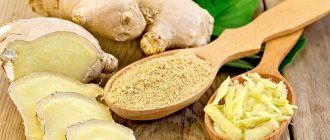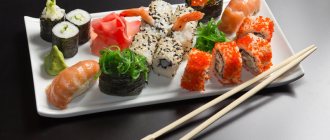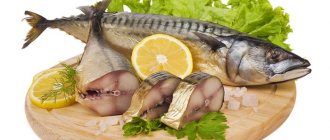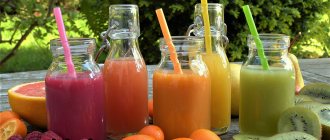Useful properties of mushrooms
The effect on the human body is determined by the biochemical composition.
Mushrooms contain a large amount of proteins with a low calorie content; they quickly fill you up and reduce the feeling of hunger. This allows them to be used in weight loss diets. A variety of amino acid, vitamin and mineral compositions also make the product desirable for consumption. Contains vitamins PP, A, C, E, group B, beta-carotene. Minerals include potassium, phosphorus, magnesium, iodine, and chromium. There is calcium, chlorine, zinc, iron, and fluorine in small quantities.
The beneficial properties of mushrooms include:
- strengthening the immune system, muscles, musculoskeletal system;
- increased visual acuity;
- improvement of the external condition of the skin, teeth, nails;
- normalization of the nervous, cardiovascular, hematopoietic, hormonal systems;
- antitumor, anti-inflammatory effect;
- removal of heavy metals and radioactive substances from the body;
- reducing blood cholesterol levels.
On a note! Chanterelles are useful for the prevention and treatment of tuberculosis.
Possible harm from mushrooms
Despite the rich content of useful elements, the product has a significant disadvantage - the difficulty of digesting the chitin contained in them. The complex polysaccharide is excreted from the woman’s body unchanged.
Minuses:
- difficulty in absorbing vitamins - only from minimal doses that are comfortable for digestion (<100 grams);
- the ability to absorb toxins (even a “healthy”, non-poisonous mushroom grown near the road contains up to 50% of harmful chemicals);
- severity of digestion;
- risk of poisoning (the variety of species is confusing, there is a risk of error during collection).
If you adhere to the rules for collecting, processing and storing mushrooms, then the likelihood of poisoning is minimal. And if the consumption standards are observed, the product will become a useful addition to the diet.
Mushrooms are high FODMAP foods. This abbreviation refers to a type of carbohydrate that is poorly digested and causes flatulence. However, it is difficult to say whether such foods in a mother's diet can have a bad effect on the newborn baby because this is a new area of research. [3]
High FODMAP foods are beneficial despite their difficulty in digestion. Their micronutrients enrich breast milk and benefit the baby. It may be that infants need to be exposed to high and low FODMAP foods to ensure that their gut flora is diverse. [3]
Why should you be careful with mushrooms?
You should be extremely careful with mushrooms.
Their peculiarity is that they absorb from the environment and accumulate radioactive compounds, heavy metals and toxins. Mushrooms take a long time to digest (more than 3 hours), are poorly absorbed, and slow down the secretion of digestive juice in the stomach. Contraindicated for disorders of the gastrointestinal tract, kidneys, and gallbladder.
They contain many harmful substances: chitin, choline. The first interferes with the absorption of proteins and cannot be digested by digestive juices. Choline is a poison that can cause diarrhea, shortness of breath, and decreased cardiac activity.
The danger comes from poisonous varieties masquerading as edible. Inexperienced mushroom pickers may make mistakes when collecting, and just one small mushroom is enough for serious consequences.
How can mushrooms be harmful to a nursing mother and baby?
Everything that a nursing woman eats is passed on to the baby through mother's milk. But is it possible to eat mushrooms while breastfeeding a newborn, because they have so many beneficial properties and contain many vitamins and minerals?
Mushrooms during lactation can cause harm to him, expressed by allergic reactions, indigestion, colic, and poisoning. The baby's body does not produce enough enzymes to digest such food. Of course, the mother’s body takes on most of the work, but for a newborn it is still a difficult task.
May contain toxins, radioactive compounds, heavy metals that cause poisoning, developmental arrest and other disorders in the body. The greatest danger is posed by poisonous specimens that are eaten even in minimal quantities, as well as those growing within the city, near roads, factories, and factories. Fungal spores lead to allergic symptoms.
On a note! When choosing a product, nursing women should also pay attention to freshness, absence of damage and worms. Old specimens can be harmful, even if they are allowed for breastfeeding and were grown in special farms.
Doctor Komarovsky's opinion
Evgeniy Olegovich is convinced that you should not eat mushrooms while breastfeeding. This is associated with a high risk of poisoning from a questionable product. Komarovsky classifies mushrooms during breastfeeding as undesirable menu components. Even the most experienced mushroom picker in the forest can make a mistake that turns out to be fatal. There is no point in exposing your baby to such danger.
The doctor warns that forests are polluted, and therefore mushrooms growing in them are not healthy for a nursing mother. It would be wiser to wait until the end of the lactation period.
Can you eat mushrooms while breastfeeding?
The period of breastfeeding imposes certain restrictions on the diet of a nursing mother. The age and health status of the child determine whether mushrooms can be consumed while breastfeeding. It is also of great importance how familiar they are on a woman’s menu. If before and during pregnancy the mother often ate mushrooms, then you can eat them while breastfeeding.
A newborn is distinguished by the sensitivity of the digestive tract to food innovations. His body is not yet adapted to digest difficult-to-digest food. For this reason, when asked whether it is possible to have mushrooms while breastfeeding in the first month, pediatricians answer negatively. First, the diet is expanded to include low-allergenic foods that do not cause digestive upset. More complex ones are introduced only after them and provided that the baby is in good health.
What mushrooms can you eat?
It is worth choosing boiled or stewed dishes.
For preparing dishes with natural feeding, mushrooms are used fresh or dried. The preferred method of heat treatment is boiling, stewing, baking. During frying, they are soaked in a large amount of fat, which contains harmful substances due to high temperatures.
Mushrooms that are allowed to be consumed by nursing women include champignons and oyster mushrooms grown in special farms. It is acceptable to use chanterelles and porcini mushrooms in the menu due to their high content of nutrients. But the latter can be eaten only after the child is one year old, because... it accumulates harmful substances more than others; it is difficult to distinguish it from the poisonous bitterling, bilious and satanic varieties.
What mushrooms are not allowed?
During lactation, the mother should remove half-raw, salted, pickled, canned, and fried foods from her menu. It is not advisable to consume salt and spices in large quantities during breastfeeding. Harmful substances can accumulate in canned food and botulism can develop, which can lead to disastrous consequences.
Fried ones lose their dietary properties due to soaking in oil. The temperature of processing in this way is higher, more useful substances are destroyed.
Attention! It is advisable to exclude non-farmed mushrooms from the diet as much as possible. Mushrooms collected in the forest pose a danger to the baby’s well-being.
Champignons during breastfeeding
Unlike other species, champignons do not absorb harmful substances from the soil, are easier to digest and assimilate (up to 80-90%), and are grown on farms. They contain fiber, which removes toxins, poisons and heavy metals. They have a beneficial effect on the nervous and cardiovascular systems, help with constipation, and restore the body after physical exertion, surgery, childbirth, and illness.
Eating champignons while breastfeeding reduces the mother’s stress level, helps cope with headaches, and gives strength. It is acceptable to use for diabetes. Calorie content is 27 kcal per 100 g, which will help restore shape after pregnancy. For a child, this is the safest option, rarely causing unwanted reactions when used wisely.
Champignons are a harmless type of mushroom
Is it possible to have pickled mushrooms?
Such products are very undesirable for nutrition during this period. When breastfeeding, pickled mushrooms will do more harm than good. Digested, absorbed worse, contain vinegar and spices. They can change the taste of milk, which will lead to a decrease in lactation. There are frequent cases of poisoning with this dish.
Kinds
Forest edible
Boletuses are related to boletuses. They have a thicker stem and a compacted cap flesh, which can be red, white or yellow-brown, large or small in size.
Mushrooms grow next to aspen trees, mostly young ones. They are looked for in mixed forests. The calorie content is 22 kcal per 100 g. They contain fiber, vitamins A, PP, C, group B, and protein.
Boletuses differ in appearance and cannot be confused with other species, so it is difficult to get poisoned by them. In cooking, redheads are fried, dried, salted, and pickled. You should not eat the product if you have an individual intolerance.
Porcini mushrooms are considered the most beneficial during breastfeeding. They have more protein than other types. But there is less vitamin PP than in honey mushrooms, and B2 - than in boletus. Porcini mushrooms during breastfeeding prevent the onset of diabetes, strengthen the immune system, inhibit malignant tumors, and help recover after childbirth or cesarean section.
Chanterelles relieve night blindness by improving vision. These mushrooms do not accumulate radioactive elements, but, on the contrary, remove radionuclides from the body. Chanterelles are not recommended for individual intolerance, chronic diseases of the stomach, kidneys, and liver.
Farm
Champignons are low in calories, and therefore allow you to quickly return to prenatal forms. They clean blood vessels and prevent atherosclerosis, remove toxins, stabilize the nervous system, equalize heart rate, stimulate collagen formation, making the skin elastic. Pyrocatechin in champignons increases blood clotting, so those who are prone to thrombosis should not eat them.
Oyster mushrooms are recommended for a nursing mother because of their unique composition; they contain acids, carbohydrates, fats, vitamin PP, and a large amount of protein. Mushrooms cleanse the body. Low calorie content and low fat content allows the product to be used as a dietary product.
Oyster mushrooms during breastfeeding maintain a feeling of fullness due to long digestion. Vitamins D and E have a beneficial effect on bone tissue and prevent the development of rickets.
Mushrooms for nursing mothers are allowed in moderate portions. Abuse causes diarrhea and bloating. Oyster mushrooms are contraindicated for those who are allergic to them.
Rules for use by a nursing mother
Following several rules for using mushrooms during breastfeeding will allow you to get the maximum benefit and protect yourself from possible undesirable consequences:
- Buy from stores that comply with storage conditions.
- Give preference only to those specially grown on farms, avoid eating wild mushrooms.
- There are boiled, baked, stewed dishes. Avoid fried, canned and pickled foods.
- Prolonged cooking, although it destroys vitamins, eliminates harmful substances.
- Fine cuts.
- The maximum portion of boiled dish is 200 g, dried for further heat treatment - 40 g.
- Gradual introduction of a new product into the diet.
- At first, you can cook mushroom dishes no more than 2 times a month, then once a week.
- Close monitoring of the child’s condition, exclusion from the diet if a negative reaction is suspected.
When can you start eating mushrooms?
For the first month, a woman must follow a strict diet. Then her diet is gradually expanded to include familiar, non-allergenic foods. When breastfeeding, it is advisable to introduce mushrooms into your menu no earlier than 6 months. It is advisable that by this time the baby has already begun to eat something other than mother’s milk.
On a note! A diluted tincture of kombucha (kombucha) can be given to infants after 6 months. Mom can try using it for 1-2 months. earlier.
How to include mushrooms in the diet without harming the child?
If an allergic reaction occurs, you should exclude the innovation from the menu.
Innovation is added to the diet during natural feeding, like all others, when keeping a food diary in the first half of the day. You can try a small piece first. Any changes in the baby's condition should be recorded. If allergic reactions or gastrointestinal disorders occur in an infant, the innovation should be removed from the menu.
Mushrooms should be consumed strictly according to the rules, increasing the serving size and frequency of inclusion in the menu gradually. Use only specially grown champignons and oyster mushrooms. It is advisable to try varieties collected in the forests no earlier than a year after the birth of the baby.
Cooking rules
Obtaining maximum benefits is ensured by proper preparation of mushroom dishes:
- Before heat treatment, carefully sort through and remove all specimens that raise doubts.
- Use only one type of mushroom for each dish.
- First bring the cooking water to a boil, add salt (0.5 tbsp per 1 liter of water).
- Ready mushrooms settle to the bottom, while raw mushrooms float to the surface.
- Do not use aluminum, cast iron, copper, zinc, or tin utensils for preparing and storing food.
- When breastfeeding, storing prepared meals is prohibited.
- It is not advisable to add strong-smelling spices to champignons, as they easily change the taste.
- Vinegar can be replaced with lemon juice.
- When cooking, the onion will help you identify the poisonous mushroom: if it turns blue, then the contents of the pan cannot be used for food.
- Pre-rinse the dried ones and soak in water for 2-4 hours.
What mushrooms are not allowed?
A nursing mother should not eat salted or pickled mushrooms. The increased content of spices and vinegar, the consumption of salty foods negatively affects the production of breast milk and feeding. In addition, pickles and marinades cause heartburn, severe stomach upset and poisoning.
Eliminate canned food, raw and half-raw mushrooms from your diet. The fruits can be eaten only after heat treatment. Moreover, it is better not to eat fried foods, since frying and hot vegetable oil make the product even heavier. As a result, food will take a very long time and be difficult to digest. Raw and half-raw fruits cause serious poisoning, problems and even gastrointestinal diseases!
Dried mushrooms can only be eaten if it is known under what conditions the fruits were dried and whether the drying was carried out correctly. Suitable dishes for nursing mothers include stewed and baked mushrooms, mushroom broth with vegetables, and mushroom casserole. We offer several recipes using this product.
Is it possible to drink kombucha during breastfeeding?
Kombucha infusion contains amino acids, vitamins, and minerals. It has an antimicrobial effect, restores beneficial intestinal flora, improves sleep, relieves nervousness, and increases performance. Kombucha helps normalize weight, hormonal balance, and strengthen the immune system.
It must be borne in mind that the use of infusion has contraindications. Allergic reactions and digestive problems may occur. Kombucha is prohibited if you have gastritis with high acidity or type 1 diabetes.
When breastfeeding, drink the infusion diluted, freshly prepared (up to 4 days). Start with ¼ cup, gradually increasing the volume to ½ tbsp. Take 40 minutes before meals or 2 hours later.
How to choose and include this protein product in the diet of mothers
Forest mushrooms allowed for consumption during lactation include porcini mushrooms, chanterelles and boletuses. They are very tasty and are perfectly absorbed by the human body. The best and safest way to prepare them is mushroom soup or vegetable stew. The main criterion for the safety of forest mushrooms remains their source of origin. Don't buy them from strangers, along highways or in unauthorized markets. But even if the place of collection is known, it is safest to use dried mushrooms - they contain the lowest concentration of harmful substances.
Dried mushrooms are very convenient to store
The safest for lactation are champignons in any form. As you know, these are mushrooms artificially grown on farms, an absolutely controlled mushroom culture, the composition of which is strictly monitored by specialists. Champignons can be included in the menu of a nursing mother from 2–3 months after birth.
Artificially cultivated champignons are recognized as the safest mushrooms for nursing women
Pediatricians advise introducing them gradually, monitoring the baby’s reaction, and eating no more than 50 grams per day - only 200 grams for the entire week . If the child does not respond adequately to changes in the mother’s diet, then it is better to exclude mushrooms from the diet. The same advice and consumption standards apply to other types of mushrooms.
After successfully including champignons and chanterelles in the menu of a nursing mother, you can try white ones.
Boletuses, also known as white mushrooms, are considered the most delicious mushrooms.
Video: how to dry boletus mushrooms
Mushroom recipes
When breastfeeding, it is advisable to prepare mushroom dishes that do not require long frying in oil. Can be used fresh or dried for cooking. Add spices and salt in small quantities. Mushrooms go well with vegetables, herbs, legumes, and sour cream.
Mushroom soup
- champignons – 300-350 g
- potatoes – 450 g
- onion – 90 g
- pasta – 100 g
- vegetable oil – 30 g
- greens, bay leaf, salt
- water – 2.5 l
Sauté the onion until golden brown, add champignon slices and fry a little more. Add salt, bay leaves, diced potatoes to boiling water, cook for 20 minutes. Add champignons with onions, pasta, cook for 15-20 minutes. At the end add finely chopped herbs.
Stewed cabbage with champignons in a slow cooker
- cabbage – 1000 g
- champignons – 300 g
- carrots – 140 g
- onion – 140 g
- tomato paste – 1 tbsp. l.
- vegetable oil – 30 g
- granulated sugar – 1 tsp.
- salt, pepper, bay leaf
- water – 4 tbsp. l.
Peel the vegetables and rinse. Cut the champignons into slices, the onion into half rings, finely chop the cabbage, grate the carrots. Pour oil into the multicooker, set to frying mode, add champignons, fry for about 10 minutes. Add onion, carrots, simmer, stirring, 10 minutes. Dilute tomato paste with hot water, add along with cabbage, salt, and spices to the champignons. Mix everything well, set the simmer mode for 30 minutes.
Rice with champignons
- rice – 2 tbsp.
- champignons – 300 g
- carrots – 90 g
- onion – 90 g
- vegetable oil – 45 g
- salt, spices
Wash the vegetables, peel and rinse. Grate the carrots, cut the onion into cubes, and cut the champignons into thin slices. Fry vegetables in a frying pan with oil for 4 minutes. Add champignons, simmer, stirring, for 7 minutes. Salt and pepper, add rice, pour boiling water 1 cm above. Cover with a lid and leave on low heat until the rice is cooked.
Breastfeeding is not a reason to give up your favorite foods. Mushrooms are allowed in the diet of nursing women who consumed them before this period without health problems. The beneficial properties will improve the health of mother and baby, provided that the rules for preparing mushroom dishes are followed.
Folk recipes
For heart
White mushrooms (boletus mushrooms) are used to prepare tincture. The caps are placed in a jar and completely filled with vodka. Place in a warm, dark place for 3 weeks. Strain. Drink a teaspoon three times a day for 21 days, then a break for 7 days. The product helps with angina pectoris and increases vital energy levels.
For bruises
For hematomas, boletus caps are used. They are boiled and left for 2 hours. Apply to the affected area overnight and wrap it up.











